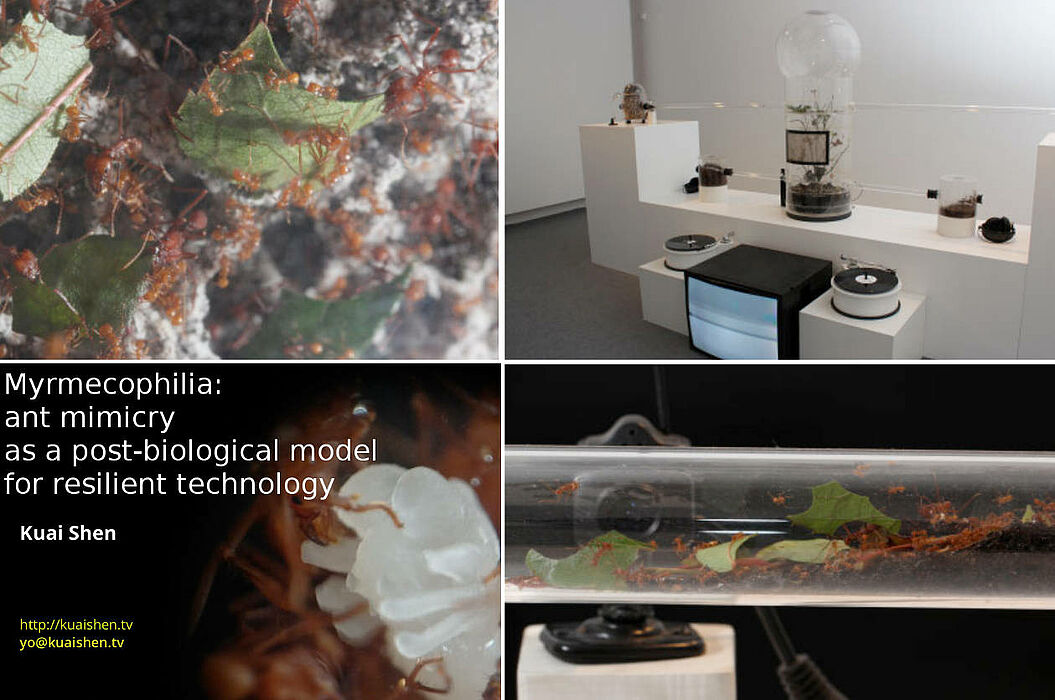| Date: | 18.05.2016 |
| Time: | 14:00 |
| Room: | F1.110 |
Kuai Shen is an audiovisual naturalist and ant lover. He holds a BA in digital arts from University San Francisco de Quito, a Master in media arts from the Academy of Media Arts Cologne, and an MA in Game Design and Development from the University of Applied Sciences Cologne. His artistic research about ants has been published, for example, in the Leonardo MIT Journal for the SIGGRAPH 2011. His work has been selected among the best bio-artists in the recent book by William Myers, "Bio Art: Altered Realities".
<link http: kuaishen.tv>kuaishen.tv
<link http: kuaishen.tv>kuaishen.tv/0hm1gas/0hm1gas_FOTOS.html
<link https: en.wikipedia.org wiki myrmecophily>en.wikipedia.org/wiki/Myrmecophily
Myrmecophilia: ant mimicry as a post-biological model for resilient technology
"Nature creates similarities. One need only think of mimicry. The highest capacity for producing similarities, however, is man's. His gift of seeing resemblances is nothing other than a rudiment of the powerful compulsion in former times to become and behave like something else. Perhaps there is none of his higher functions in which his mimetic faculty does not play a decisive role." - Walter Benjamin
Ant mimicry seems to be a recurrent phenomenon in the nature of insects, particularly in certain species of insect individuals, which mimic the appearance, behaviour and chemical communication of ants. From an artistic perspective, this evolutionary system of mimicry suggests that imitation as well as deceit could be considered an immanent social force more than a strategy for survival. Can we interconnect such recurrences of mimicry in nature to technologically-driven experiences as well as to human interactions?
The relationship between human technology and biological organisms plays an important role in the creation of new ecosystems and the transformation of old ones. It is essential to investigate these multi-scalar relationships between organisms and artefacts, which reverberate and have the power to affect not only natural and technological environments, but virtual social encounters where human and nonhuman can mutually coexist. Moreover, the relations between the imposing artificial will of humans and the unforeseeable morphogenesis of nature should be rather approached from the immanent naturalist perspective of the doctrine of the similar, that is, forces of imitation which recover the importance of relationships in the creation of the resilient networks.
Ant mimicry has indeed a strong influence in the materialization of media art practices and in the development of artificial intelligence, too. Deceiving and acting as something or someone else is an experience we humans can enact with the aid of technology in the age of networks: a transformative phenomena which breaks the boundaries delimiting the autopoiesis of the artificial and the organic and creates opportunities of inclusion, hybridization and collaboration.

